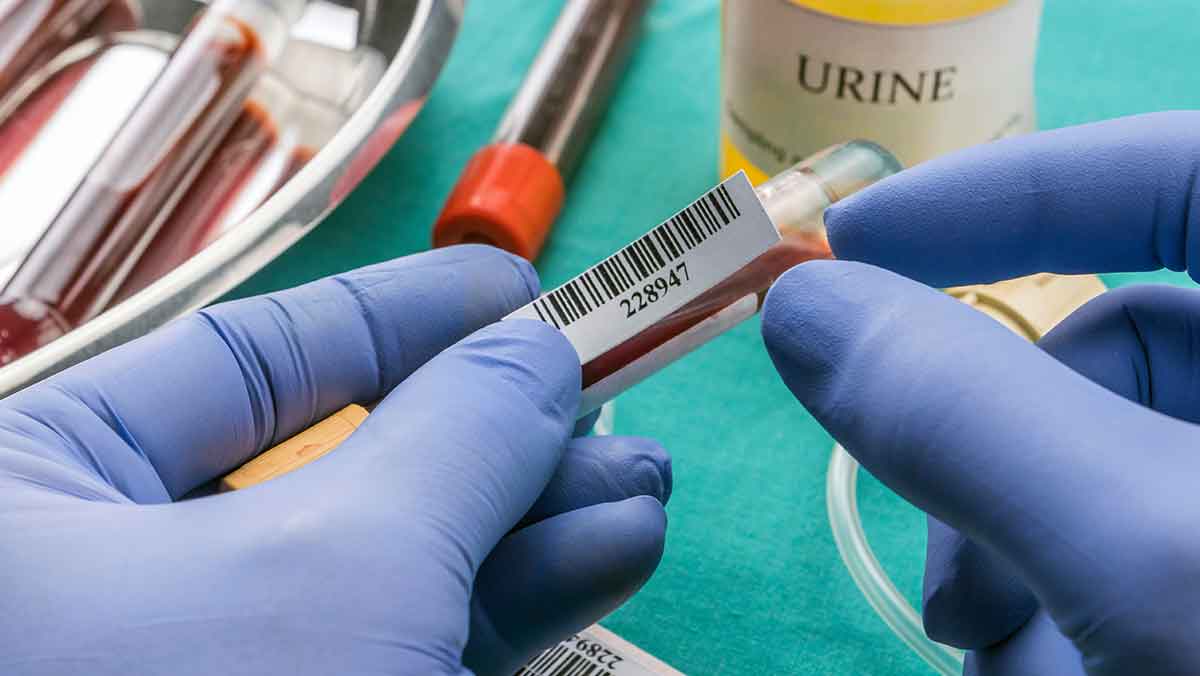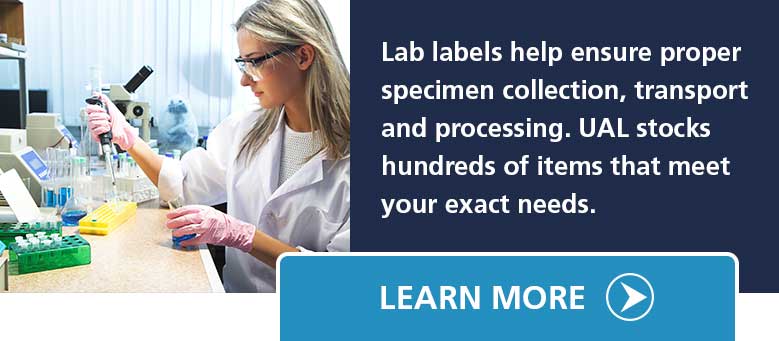Diagnosing and treating a patient can be straightforward, incredibly challenging and everything in between. Although they don’t always provide the answer, billions of times each year, healthcare providers order tests to help discover additional information to guide their decision-making. But with 322,448 labs analyzing over 7 billion clinical lab tests performed annually in the United States¹, the only way to ensure the right information is uncovered, analyzed and acted upon is to follow specific specimen labeling guidelines and requirements. As with nearly all provider workflows, the first step in the process centers around the patient.
What Information Is Required On a Specimen/Test Tube Label?
When drawing and preparing specimens for laboratory analysis, the label attached to the specimen container or test tube informs the laboratory staff and protects the patient from adverse errors. It must contain the following information:
- Patient first and last name
- A unique patient identifier such as social security number, medical record number or date of birth
- Collection date and time
- Specimen type and/or source
- Initials of the person who collected the specimen
What Types Of Specimen Containers/Test Tubes Are Required?
A specimen is first collected in a primary container such as primary blood tubes, urine cups, formalin containers, blood culture bottles and more, which safely holds the specimen for testing. In addition, depending on the type of test, blood tubes use caps with different colors which indicate the type of additives in the vial.
After collection, specimens are transported to the lab in a secondary container such as:
- Small biohazard specimen bags
- Large designated biohazard bags
- Other suitable containers
Regardless of the type of container selected, they must be:
- Leakproof
- Labeled as a biohazard
In addition, any paperwork that accompanies the specimen must be protected from contamination and separate from the primary specimen.
Test Tube Transportation
Once collected, specimens are transported in a variety of ways. The optimal mode of transportation depends upon a variety of factors. For example,
- Is the specimen transported within the facility?
- Is the specimen transported from outside the facility?
- Does the specimen require refrigeration?
Within a facility, a pneumatic tube is one option. Typically, this is intended for small specimens. Heavy samples and ones with glass as the primary container are commonly restricted. Further, most healthcare organizations recommend against using the pneumatic tube for irreplaceable specimens or those which may be compromised by the tube system and interfere with testing. This might include:
- CSF, bone marrow, body tissue/parts
- Platelet function analysis
- Special coagulation testing
- Semen analysis
Lastly, when using a pneumatic tube for transportation, it’s still essential to use a leakproof container and proper biohazard labeling.
Specimen Transportation From Outside The Facility
From outside the facility, bio bags are a common means of shipment. Transporting hazardous materials requires specific labeling and packaging steps. To ensure proper handling and testing efficacy, use these steps:
- Label the package with a biohazard label to alert workers to the Universal Precautions they should follow
- If your specimen falls into category B, apply a UN3373 label and mark the package with “Biological Substances, Category B.”
- Use a third rigid container to avoid potential temperature fluctuations and protect the integrity of specimens
Refrigerated or Frozen Specimens
Similar to specimens transported from outside the facility, those needing refrigeration require special attention. It necessitates using a third rigid container to retain the appropriate temperature. A cooler is often the recommended vehicle.
Improperly Labeled Test Tubes and Specimens
What’s more important to the lab testing process, the specimen or the label that identifies the container the specimen is collected in?
They are equally important!
Although the lab can’t help the care team diagnose a patient or devise a treatment regimen without the specimen, there is no way to identify the patient, the type of specimen and more without the label. In fact, it’s not just a missing label but also improperly labeled test tubes or specimen containers that compromise the collection process which may result in the rejection of the specimen. The Journal Of Clinical Laboratory Analysis reports that a common reason for rejecting a specimen is mislabeling.
But there are specific labeling steps that can help prevent the problems that mislabeling can cause.
Why Do Specimen/Test Tube Labels Fail?
Ranging from the improper selection of the label material and adhesive to improper application on the specimen container, there are a variety of reasons why specimen and test tube labels fail.
Specimen/Test Tube Label Materials and Adhesives
The type of material and adhesive used on the label directly impacts its performance. For example, instead of adhering permanently to the specimen container or test tube, it may detach and reattach to the inside of the shipping container. This may occur because:
- A supplier manufactures the label with the wrong adhesive
- The label specifications are inaccurately defined during the procurement process
In addition, changing the type of test tube or vial may cause an otherwise correctly specified label to fail. For example, a container or test tube with a different plastic composition may cause a label that worked perfectly before to fail.
What’s more, even when the label material and adhesive are correct, spills in the pneumatic tube create mislabeling challenges. The sheer pressure in the pneumatic tube can cause a label to detach if not applied correctly. Although foam inserts can prevent this problem, concerns over the bacteria they can attract limit their use.
Specimen/Test Tube Label Application
Lastly, the label may be applied improperly because the staff is rushed or is not trained on how to apply the label correctly. This can result in leaving part of the adhesive exposed, which can cause the label to:
- Attach to the inside of the shipping container and detach from the specimen container
- Fold over onto itself and obscure essential patient identification information
Test Tube and Specimen Labels At United Ad Label
When designed, produced and executed properly, test tube and specimen labels prevent identification errors. United Ad Label provides compatible options for laboratory information systems including Cerner, EPIC, Sunquest/MISYS, Meditech, Softlab, McKesson and more, that work effectively in direct thermal and thermal transfer printers. Each format is designed to mitigate the challenges of each step of the workflow. Contact us to learn more.
¹American Clinical Laboratory Association Value of Lab Testing ACLA https://www.acla.com/value-of-lab-testing/


